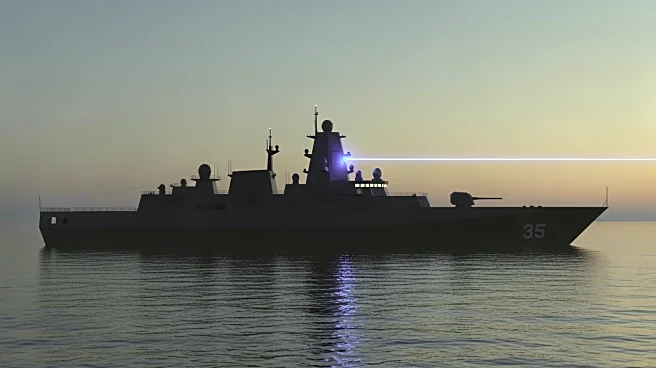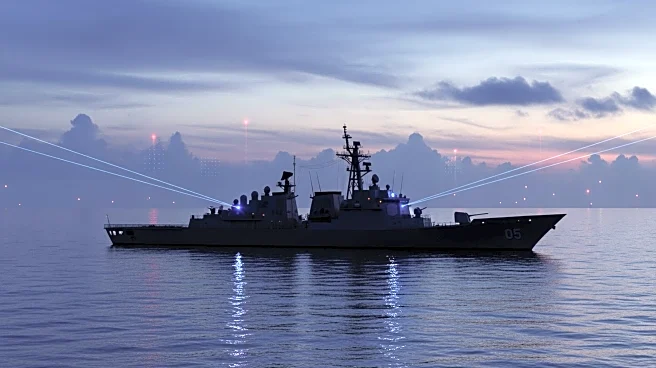What's Happening?
The UK Ministry of Defence has announced a significant contract with MBDA UK to supply the Royal Navy with the DragonFire drone-zapping laser system. This £316 million ($414 million) deal will see the first
of these direct-energy weapons fitted on a navy destroyer by 2027. The DragonFire system, developed in collaboration with QinetiQ and Leonardo, has demonstrated its capability by successfully taking down high-speed drones in trials. The system is noted for its cost-effectiveness, with each shot costing approximately £10, compared to the much higher costs of traditional missile-based defenses. The UK’s Strategic Defence Review has supported this initiative with nearly £1 billion in additional investments, aiming to position the UK at the forefront of laser-directed energy weapons.
Why It's Important?
This development is crucial for the UK's defense strategy, particularly in countering the growing threat of low-cost drones on the battlefield. The DragonFire system represents a significant advancement in military technology, offering a more economical and efficient solution for air defense. By investing in such cutting-edge technology, the UK aims to enhance its defense capabilities and maintain a leading position within NATO. The project is also expected to create and sustain 590 jobs across the UK, contributing to the national economy and technological innovation. The successful implementation of this system could set a precedent for other nations to follow, potentially reshaping military defense strategies globally.
What's Next?
The next steps involve the continued development and testing of the DragonFire system, with MBDA UK working towards delivering the systems to the Royal Navy by 2027. As the project progresses, it will be crucial to monitor the integration of this technology into existing naval operations and its effectiveness in real-world scenarios. The UK government and defense industry stakeholders will likely continue to invest in and explore further advancements in directed energy weapons, potentially expanding their use across different branches of the military. The success of this initiative could lead to increased collaboration with international allies and further investments in defense technology.












